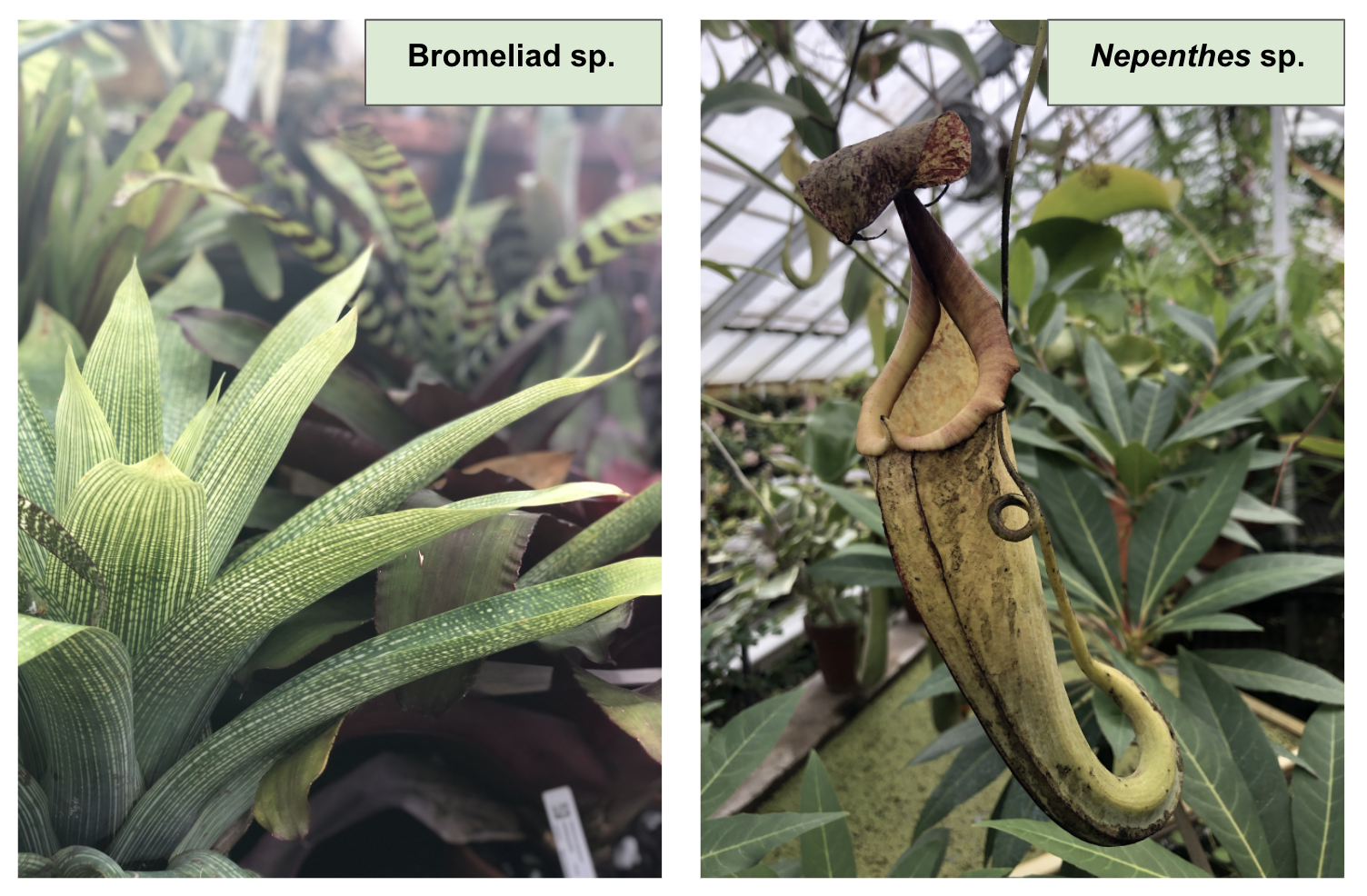- Welcome!
- Project Introduction
- Nepenthes Pitcher Plant Life Cycle
SURF 2020 Greenhouse Project
Jailene Gonzalez and Hannah Rappaport
Last updated on 2020-07-31
Welcome!
Project Introduction

We are studying the microbial communities living within multiple genera of bromeliads (pictured left) and multiple species of Nepenthes pitcher plants (pictured right). Both plants contain phytotelmata, water bodies within plants, held either in the tanks between bromeliad leaves or in the pitfall traps of the pitchers. These phytotelmata harbor communities of diverse microbes, even between plants in the same small greenhouse room. Pitcher plants exert more of an influence on these communities than bromeliads because Nepenthes release many of their own enzymes to help digest their mainly macrobial prey (Adlassnig et al. 2010, Bittleston et al. 2018). Our ultimate goal is to study the differences in microbial communities within the pitcher plants across pitcher ages from unopened “baby” pitchers to withered adult pitchers.
Nepenthes Pitcher Plant Life Cycle
This figure shows how a Nepenthes pitcher plant morphology changes throughout its development. It first starts off as a tendril sprouting out of a leaf tip (1 & 2). Then at the tip of that newly formed tendril a modified leaf begins to form and develop into a closed pitcher trap (3 & 4). Once this closed “baby” pitcher plant has formed its digestive juices (enzymes) it becomes an opened “adult” pitcher (5 & 6).